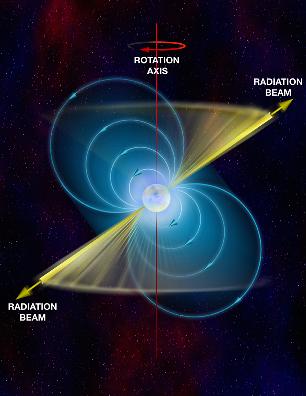

CREDIT: Bill Saxton, NRAO/AUI/NSF
FASTEST SPINNING STARS FOUND SO FAR
The spinning star, a millisecond pulsar called J1823-3021A, is located inside a packed conglomeration of stars called a globular cluster about 27,000 light-years from Earth in the constellation Sagittarius.
The pulsar emits incredibly intense high-energy gamma rays, which the researchers detected and studied using NASA's Fermi Gamma-Ray Space Telescope. Their analysis suggests the pulsar is just 25 million years old — a baby as far as these stars go, for millisecond pulsars tend to be a billion years old or so, researchers said.
The pulsar's extreme brightness and youth challenge current ideas about how super-bright millisecond pulsars form and how widespread they may be, researchers said. [Top 10 Strangest Things in Space]
Embargoed for Release: 2:00 p.m., EST, Thursday, January 12, 2006
Contact:
Dave Finley, Public Information Officer
Socorro, NM
(505) 835-7302
dfinley@nrao.edu
Graphics: How Are Millisecond Pulsars Formed?
Astronomers using the National Science Foundation's Robert C. Byrd Green Bank Telescope have discovered the fastest-spinning neutron star ever found, a 20-mile-diameter superdense pulsar whirling faster than the blades of a kitchen blender. Their work yields important new information about the nature of one of the most exotic forms of matter known in the Universe.
"We believe that the matter in neutron stars is denser than an atomic
nucleus, but it is unclear by how much. Our observations of such a rapidly
rotating star set a hard upper limit on its size, and hence on how dense the
star can be.," said Jason Hessels, a graduate student at McGill University in
Montreal. Hessels and his colleagues presented their findings to the American
Astronomical Society's meeting in Washington, DC.
Pulsars are spinning neutron stars that sling "lighthouse beams" of radio
waves or light around as they spin. A neutron star is what is left after a
massive star explodes at the end of its "normal" life. With no nuclear fuel left
to produce energy to offset the stellar remnant's weight, its material is
compressed to extreme densities. The pressure squeezes together most of its
protons and electrons to form neutrons; hence, the name "neutron star."
"Neutron stars are incredible laboratories for learning about the physics of the fundamental particles of nature, and this pulsar has given us an important new limit," explained Scott Ransom, an astronomer at the National Radio Astronomy Observatory and one of Hessels' collaborators on this work.
The scientists discovered the pulsar, named PSR J1748-2446ad, in a globular
cluster of stars called Terzan 5, located some 28,000 light-years from Earth in
the constellation Sagittarius. The newly-discovered pulsar is spinning 716 times
per second, or at 716 Hertz (Hz), readily beating the previous record of 642 Hz
from a pulsar discovered in 1982. For reference, the fastest speeds of common
kitchen blenders are 250-500 Hz.
The scientists say the object's fast rotation speed means that it cannot be
any larger than about 20 miles across. According to Hessels, "If it were any
larger, material from the surface would be flung into orbit around the star."
The scientists' calculation assumed that the neutron star contains less than two
times the mass of the Sun, an assumption that is consistent with the masses of
all known neutron stars.
The spinning pulsar has a companion star that orbits it once every 26 hours.
The companion passes in front of the pulsar, eclipsing the pulsar about 40
percent of the time. The long eclipse period, probably due to bloating of the
companion, makes it difficult for the astronomers to learn details of the
orbital configuration that would allow them to precisely measure the masses of
the pulsar and its companion.
"If we could pin down these masses more precisely, we could then get a better
limit on the size of the pulsar. That, in turn, would then give us a better
figure for the true density inside the neutron star," explained Ingrid Stairs,
an assistant professor at the University of British Columbia and another
collaborator on the work.
Competing theoretical models for the types and distributions of elementary
particles inside neutron stars make widely different predictions about the
pressure and density of such an object.
"We want observational data that shows which models fit the reality of
nature," Hessels said.
If the scientists can't use PSR J1748-2446ad to do that, they are hopeful
some of its near neighbors will yield the data they seek. Using the GBT, the
astronomers so far have found 30 new fast "millisecond pulsars" in the cluster
Terzan 5, making 33 pulsars known in the cluster in total. This is the largest
number of such pulsars ever found in a single globular cluster.
Dense globular clusters of stars are excellent places to find fast-rotating
millisecond pulsars. Giant stars explode as supernovae and leave rotating
pulsars which gradually slow down. However, if a pulsar has a companion star
from which it can draw material, that incoming material imparts its spin, or
angular momentum, to the pulsar. As a result, the pulsar spins faster. "In a
dense cluster, interactions between the stars will create more binary pairs that
can yield more fast-rotating pulsars," Ransom said.
The great sensitivity of the giant, 100-meter diameter GBT, along with a
special signal processor, called the Pulsar Spigot, made possible the discovery
of so many millisecond pulsars in Terzan 5. "We think there are many more
pulsars to be found in Terzan 5 and other clusters, and given that the fast ones
are often hidden by eclipses, some of them may be spinning even faster than this
new one," Ransom said
.
"We're excited about using this outstanding new telescope to answer some
important questions about fundamental physics," he said.
In addition to Hessels, Ransom and Stairs, the research team includes Paulo Freire of Arecibo Observatory in Puerto Rico, Victoria Kaspi, of McGill University, and Fernando Camilo, of Columbia University. Their report is being published in Science Express, the online version of the journal Science.
The National Radio Astronomy
Observatory is a facility of the
National Science Foundation, operated under cooperative agreement by
Associated Universities, Inc. The
pulsar research also was supported by the Canada Foundation for Innovation, the
Natural Sciences and Engineering Research Council of Canada, the Quebec
Foundation for Research on Nature and Technology, the Canadian Institute for
Advanced Research, the Canada Research Chairs Program, and the National Science
Foundation..
Graphics: How Are Millisecond Pulsars Formed?
Modified on Monday, 09-Jan-2006 11:13:51 EST
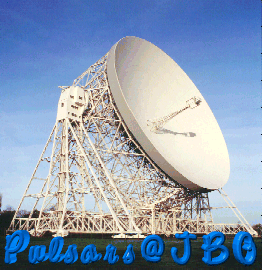
These sounds directly correspond to the radio-waves emitted by the brightest pulsars in the sky as received by some of the largest radio telescopes in the world. To listen to the pulses of a radio pulsar, click on its arrow icon.
THIS IS THE SOUND http://www.jb.man.ac.uk/~pulsar/Education/Sounds/B0329.au
HERE IS THE SOUND: http://www.jb.man.ac.uk/~pulsar/Education/Sounds/J0437.au
TRYING TO COME UP WITH A COMPARISON FOR THAT ONE - CAN'T THINKK OF WHAT MACHINE THAT IS SIMILAR TO
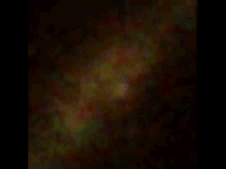
VEGA PULSAR
A pulsar (portmanteau of pulsating star) is a highly magnetized, rotating neutron star that emits a beam of electromagnetic radiation. The radiation can only be observed when the beam of emission is pointing towards the Earth, much the way a lighthouse can only be seen when the light is pointed in the direction of an observer, and is responsible for the pulsed appearance of emission. Neutron stars are very dense, and have short, regular rotational periods. This produces a very precise interval between pulses that ranges from roughly milliseconds to seconds for an individual pulsars.
The precise periods of pulsars makes them useful tools. Observations of a pulsar in a binary neutron star system were used to confirm the existence of gravitational radiation. The first extrasolar planets were discovered around a pulsar, PSR B1257+12. Certain types of pulsars rival atomic clocks in their accuracy in keeping time
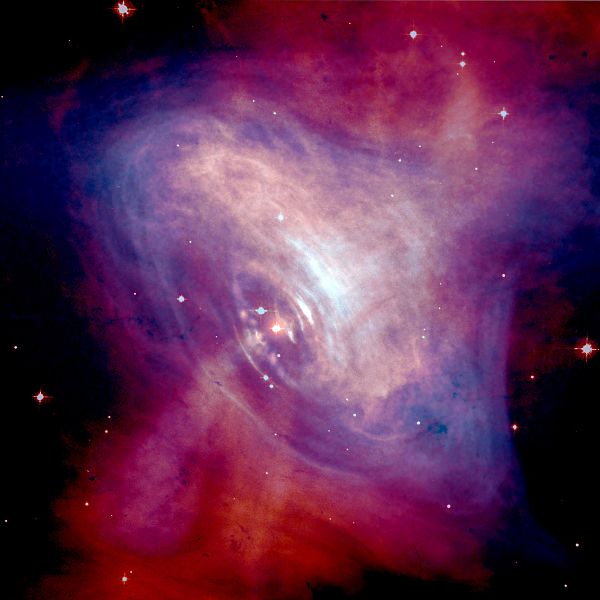
Composite Optical/X-ray image of the Crab Nebula/a>, showing synchrotron emission in the surrounding pulsar wind nebula, powered by injection of magnetic fields and particles from the central pulsar.
The first pulsar was observed on November 28, 1967 by Jocelyn Bell Burnell and Antony Hewish.[1][2][3] The observed emission from the pulsar was pulses separated by 1.33 seconds, originated from the same location on the sky, and kept to sidereal time. In looking for explanations for the pulses, the short period of the pulses eliminated most astrophysical sources of radiation, such as stars, and since the pulses followed sidereal time, it could not be man-made radio frequency interference. When observations with another telescope confirmed the emission, it eliminated any sort of instrumental effects. At this point, Burnell notes of herself and Hewish that "we did not really believe that we had picked up signals from another civilization, but obviously the idea had crossed our minds and we had no proof that it was an entirely natural radio emission. It is an interesting problem—if one thinks one may have detected life elsewhere in the universe, how does one announce the results responsibly?"[4] Even so, they nicknamed the signal LGM-1, for "little green men" (a name for intelligent beings of extraterrestrial origin). It was not until a second pulsating source was discovered in a different part of the sky that the "LGM hypothesis" was entirely abandoned.[5] Their pulsar was later dubbed CP 1919, and is now known by a number of designators including PSR 1919+21, PSR B1919+21 and PSR J1921+2153. Although CP 1919 emits in radio wavelengths, pulsars have, subsequently, been found to emit in visible light, X-ray, and/or gamma ray wavelengths.[6]
The word "pulsar" is a contraction of "pulsating star",[7] and first appeared in print in 1968:
An entirely novel kind of star came to light on Aug. 6 last year and was referred to, by astronomers, as LGM (Little Green Men). Now it is thought to be a novel type between a white dwarf and a neutron [sic]. The name Pulsar is likely to be given to it. Dr. A. Hewish told me yesterday: "… I am sure that today every radio telescope is looking at the Pulsars."[8]
The suggestion that pulsars were rotating neutron stars was put forth independently by Thomas Gold and Franco Pacini in 1968, and was soon proven beyond reasonable doubt by the discovery of a pulsar with a very short (33-millisecond) pulse period in the Crab nebula.
In 1974, Antony Hewish became the first astronomer to be awarded the Nobel Prize in physics. Considerable controversy is associated with the fact that Professor Hewish was awarded the prize while Bell, who made the initial discovery while she was his Ph.D student, was not. Bell claims no bitterness upon this point, supporting the decision of the Nobel prize committee.[9]
<In 1974, Joseph Hooton Taylor, Jr. and Russell Hulse discovered for the first time a pulsar in a binary system, PSR B1913+16. This pulsar orbits another neutron star with an orbital period of just eight hours. Einstein's theory of general relativity predicts that this system should emit strong gravitational radiation, causing the orbit to continually contract as it loses orbital energy. Observations of the pulsar soon confirmed this prediction, providing the first ever evidence of the existence of gravitational waves. As of 2004, observations of this pulsar continue to agree with general relativity. In 1993, the Nobel Prize in Physics was awarded to Taylor and Hulse for the discovery of this pulsar.[10]
In 1982, Don Backer led a group which discovered PSR B1937+21, a pulsar with a rotation period of just 1.6 milliseconds.[11] Observations soon revealed that its magnetic field was much weaker than ordinary pulsars, while further discoveries cemented the idea that a new class of object, the "millisecond pulsars" (MSPs) had been found. MSPs are believed to be the end product of X-ray binaries. Owing to their extraordinarily rapid and stable rotation, MSPs can be used by astronomers as clocks rivaling the stability of the best atomic clocks on Earth. Factors affecting the arrival time of pulses at the Earth by more than a few hundred nanoseconds can be easily detected and used to make precise measurements. Physical parameters accessible through pulsar timing include the 3D position of the pulsar, its proper motion, the electron content of the interstellar medium along the propagation path, the orbital parameters of any binary companion, the pulsar rotation period and its evolution with time. (These are computed from the raw timing data by Tempo, a computer program specialized for this task.) After these factors have been taken into account, deviations between the observed arrival times and predictions made using these parameters can be found and attributed to one of three possibilities: intrinsic variations in the spin period of the pulsar, errors in the realization of Terrestrial Time against which arrival times were measured, or the presence of background gravitational waves. Scientists are currently attempting to resolve these possibilities by comparing the deviations seen amongst several different pulsars, forming what is known as a Pulsar timing array. With luck, these efforts may lead to a time scale a factor of ten or better than currently available, and the first ever direct detection of gravitational waves. In June 2006, the astronomer John Middleditch and his team at LANL announced the first prediction of pulsar glitches with observational data from the Rossi X-ray Timing Explorer. They used observations of the pulsar PSR J0537-6910.
In 1992, Aleksander Wolszczan discovered the first extrasolar planets around PSR B1257+12. This discovery presented important evidence concerning the widespread existence of planets outside the solar system, although it is very unlikely that any life form could survive in the environment of intense radiation near a pulsar.
Initially pulsars were named with letters of the discovering observatory followed by their right ascension (e.g. CP 1919). As more pulsars were discovered, the letter code became unwieldy and so the convention was then superseded by the letters PSR (Pulsating Source of Radio) followed by the pulsar's right ascension and degrees of declination (e.g. PSR 0531+21) and sometimes declination to a tenth of a degree (e.g. PSR 1913+167). Pulsars that are very close together sometimes have letters appended (e.g. PSR 0021-72C and PSR 0021-72D).
The modern convention is to prefix the older numbers with a B (e.g. PSR B1919+21) with the B meaning the coordinates are for the 1950.0 epoch. All new pulsars have a J indicating 2000.0 coordinates and also have declination including minutes (e.g. PSR J1921+2153). Pulsars that were discovered before 1993 tend to retain their B names rather than use their J names (e.g. PSR J1921+2153 is more commonly known as PSR B1919+21). Recently discovered pulsars only have a J name (e.g. PSR J0437-4715). All pulsars have a J name that provides more precise coordinates of its location in the sky.[12]
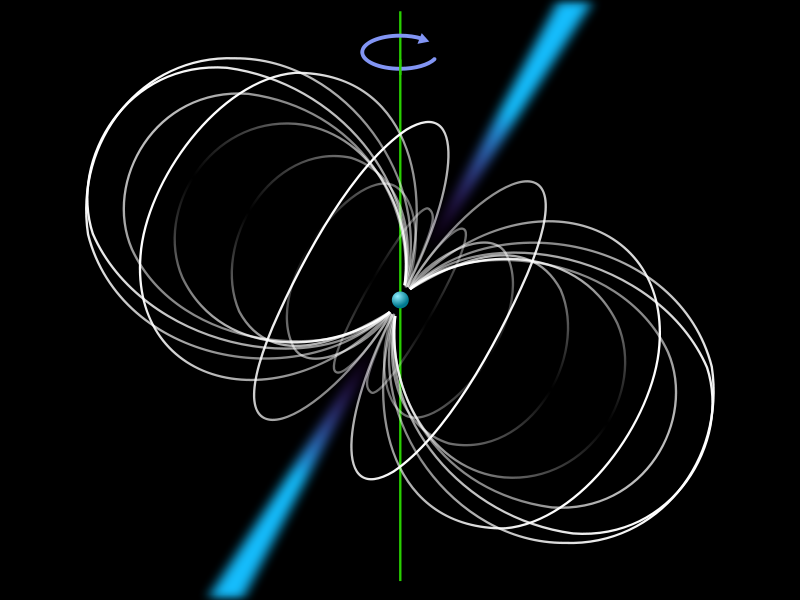
The events leading to the formation of a pulsar begin when the core of a massive star is compressed during a supernova, which collapses into a neutron star. The neutron star retains most of its angular momentum, and since it has only a tiny fraction of its progenitor's radius (and therefore its moment of inertia is sharply reduced), it is formed with very high rotation speed. A beam of radiation is emitted along the magnetic axis of the pulsar, which spins along with the rotation of the neutron star. The magnetic axis of the pulsar determines the direction of the electromagnetic beam, with the magnetic axis not necessarily being the same as its rotational axis. This misalignment causes the beam to be seen once for every rotation of the neutron star, which leads to the "pulsed" nature of its appearance. The beam originates from the rotational energy of the neutron star, which generates an electrical field from the movement of the very strong magnetic field, resulting in the acceleration of protons and electrons on the star surface and the creation of an electromagnetic beam emanating from the poles of the magnetic field.[13][14] This rotation slows down over time as electromagnetic power is emitted. When a pulsar's spin period slows down sufficiently, the radio pulsar mechanism is believed to turn off (the so-called "death line"). This turn-off seems to take place after about 10–100 million years, which means of all the neutron stars in the 13.6 billion year age of the universe, around 99% no longer pulsate.[15] The longest known pulsar period is 8.5 seconds.[16]
Though this very general picture of pulsars is mostly accepted, Werner Becker of the Max Planck Institute for Extraterrestrial Physics said in 2006, "The theory of how pulsars emit their radiation is still in its infancy, even after nearly forty years of work."[17]
Three distinct classes of pulsars are currently known to astronomers, according to the source of the power of the electromagnetic radiation:
The Fermi Space Telescope has uncovered a subclass of rotationally-powered pulsars that emit only gamma rays.[18] There have been only about one hundred gamma-ray pulsars identified out of about 1800 known pulsars.[19][20]
Although all three classes of objects are neutron stars, their observable behavior and the underlying physics are quite different. There are, however, connections. For example, X-ray pulsars are probably old rotationally-powered pulsars that have already lost most of their power, and have only become visible again after their binary companions had expanded and began transferring matter on to the neutron star. The process of accretion can in turn transfer enough angular momentum to the neutron star to "recycle" it as a rotation-powered millisecond pulsar. As this matter lands on the neutron star, it is thought to "bury" the magnetic field of the neutron star (although the details are unclear), leaving millisecond pulsars with magnetic fields 1000-10,000 times weaker than average pulsars. This low magnetic field is less effective at slowing the pulsar's rotation, so millisecond pulsars live for billions of years, making them the oldest known pulsars. Millisecond pulsars are seen in globular clusters, which stopped forming neutron stars billions of years ago.[15]
Of interest to the study of the state of the matter in a neutron stars are the glitches observed in the rotation velocity of the neutron star. This velocity is decreasing slowly but steadily, except by sudden variations. One model put forward to explain these glitches is that they are the result of "starquakes" that adjust the crust of the neutron star. Models where the glitch is due to a decoupling of the possibly superconducting interior of the star have also been advanced. In both cases, the star's moment of inertia changes, but its angular momentum doesn't, resulting in a change in rotation rate.
When two massive stars are born close together from the same cloud of gas, they can form a binary system and orbit each other from birth. If those two stars are at least a few times as massive as our sun, their lives will both end in supernova explosions. The more massive star explodes first, leaving behind a neutron star. If the explosion does not kick the second star away, the binary system survives. The neutron star can now be visible as a radio pulsar, and it slowly loses energy and spins down. Later, the second star can swell up, allowing the neutron star to suck up its matter. The matter falling onto the neutron star spins it up and reduces its magnetic field. This is called “recycling” because it returns the neutron star to a quickly-spinning state. Finally, the second star also explodes in a supernova, producing another neutron star. If this second explosion also fails to disrupt the binary, a double neutron star binary is formed. Otherwise, the spun-up neutron star is left with no companion and becomes a “disrupted recycled pulsar”, spinning between a few and 50 times per second.[21]
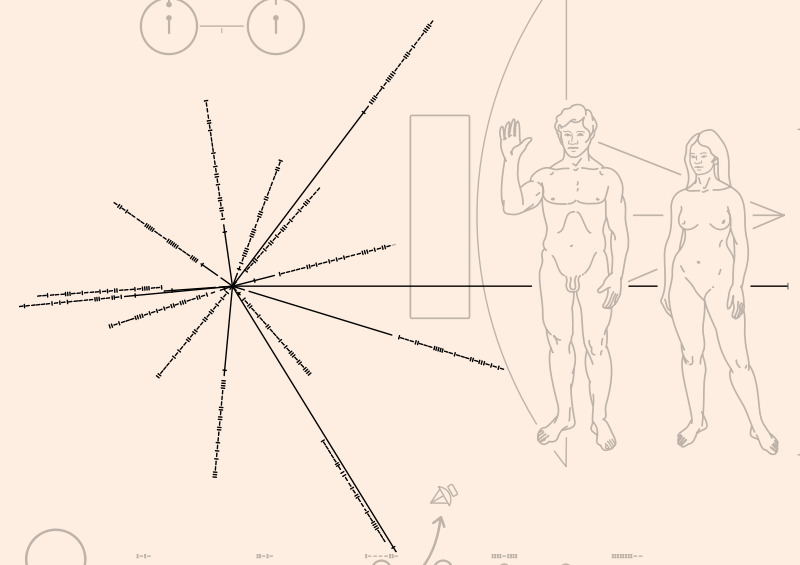 Applications
Relative position of the
Sun to
the center of the
Galaxy
and 14 pulsars with their periods denoted
Applications
Relative position of the
Sun to
the center of the
Galaxy
and 14 pulsars with their periods denoted
The study of pulsars has resulted in many applications in physics and astronomy. Striking examples include the confirmation of the existence of gravitational radiation as predicted by general relativity and the first detection of an extrasolar planetary system.
The discovery of pulsars allowed astronomers to study an object never observed before, the neutron star. This kind of object is the only place where the behavior of matter at nuclear density can be observed (though not directly). Also, millisecond pulsars have allowed a test of general relativity in conditions of an intense gravitational field.
Pulsar maps have been included on the two Pioneer Plaques as well as the Voyager Golden Record. They show the position of the Sun, relative to 14 pulsars, which are identified by the unique timing of their electromagnetic pulses, so that our position both in space and in time can be calculated by potential extraterrestrial intelligences.[22][23] Because pulsars are emitting very regular pulses of radio waves, its radio transmissions do not require daily corrections. Moreover, pulsar positioning could create a spacecraft navigation system independently, or be an auxiliary device to GPS instruments.[24][25]
For some millisecond pulsars, the regularity of pulsation is as precise as an atomic clock.[26] This stability allows millisecond pulsars to be used in establishing ephemeris time.[27]
The radiation from pulsars passes through the interstellar medium (ISM) before reaching Earth. Free electrons in the warm (8000 K), ionized component of the ISM and H II regions affect the radiation in two primary ways. The resulting changes to the pulsar's radiation provide an important probe of the ISM itself.[28]
Because of the dispersive nature of the interstellar plasma, lower-frequency radio waves travel through the medium slower than higher-frequency radio waves. The resulting delay in the arrival of pulses at a range of frequencies is directly measurable as the dispersion measure of the pulsar. The dispersion measure is the total column density of free electrons between the observer and the pulsar,
where D is the distance from the pulsar to the observer and ne is the electron density of the ISM. The dispersion measure is used to construct models of the free electron distribution in the Milky Way Galaxy.[29]
Additionally, turbulence in the interstellar gas causes density inhomogeneities in the ISM which cause scattering of the radio waves from the pulsar. The resulting scintillation of the radio waves—the same effect as the twinkling of a star in visible light due to density variations in the Earth's atmosphere—can be used to reconstruct information about the small scale variations in the ISM.[30] Due to the high velocity (up to several hundred km/s) of many pulsars, a single pulsar scans the ISM rapidly, which results in changing scintillation patterns over timescales of a few minutes.[31]
Pulsars orbiting within the curved space-time around Sgr A*, the supermassive black hole at the center of the Milky Way galaxy, could serve as probes of gravity in the strong-field regime.[32] Arrival times of the pulses would be affected by special- and general-relativistic Doppler shifts and by the complicated paths that the radio waves would travel through the strongly curved space-time around the black hole. In order for the effects of general relativity to be measurable with current instruments, pulsars with orbital periods less than about 10 years would need to be discovered;[32] such pulsars would orbit at distances inside 0.01 pc from Sgr A*. Searches are currently underway; at present, five pulsars are known to lie within 100 pc from Gamma-ray pulsars detected by the Fermi Gamma-ray Space Telescope.
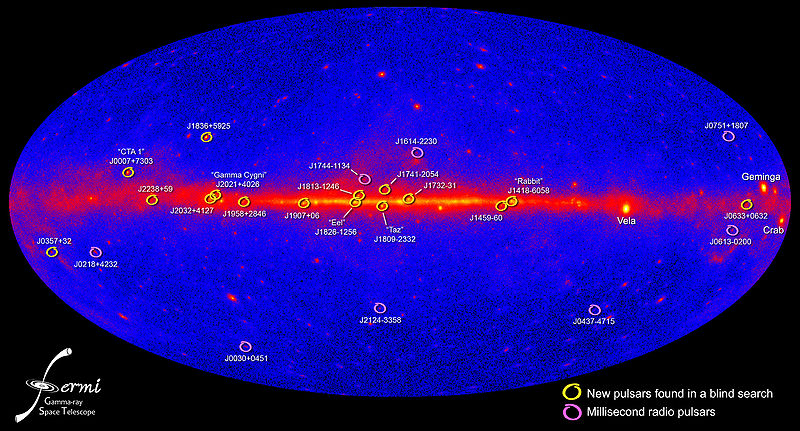
Crab Pulsar Dazzles Astronomers With Its Gamma-Ray Beams
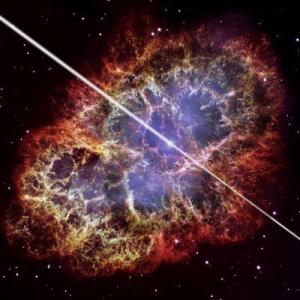
This is an artist's conception of the pulsar at the center of the Crab Nebula, with a Hubble Space Telescope photo of the nebula in the background. Researchers using the Veritas telescope array have discovered pulses of high-energy gamma rays coming from this object. (Credit: David A. Aguilar (CfA) / NASA / ESA)
ScienceDaily (Oct. 6, 2011) — A thousand years ago, a brilliant beacon of light blazed in the sky, shining brightly enough to be seen even in daytime for almost a month. Native American and Chinese observers recorded the eye-catching event. We now know that they witnessed an exploding star, which left behind a gaseous remnant known as the Crab Nebula.
The same object that dazzled skygazers in 1054 C.E. continues to dazzle astronomers today by pumping out radiation at higher energies than anyone expected. Researchers have detected pulses of gamma rays with energies exceeding 100 billion electron-volts (100 GeV) -- a million times more energetic than medical X-rays and 100 billion times more than visible light.
"If you asked theorists a year ago whether we would see gamma-ray pulses this energetic, almost all of them would have said, 'No.' There's just no theory that can account for what we've found," said corresponding author Martin Schroedter of the Harvard-Smithsonian Center for Astrophysics (CfA).
The gamma rays come from an extreme object at the Crab Nebula's center known as a pulsar. A pulsar is a spinning neutron star -- the collapsed core of a massive star. Although only a few miles across, a neutron star is so dense that it weighs more than the Sun.
Rotating about 30 times a second, the Crab pulsar generates beams of radiation from its spinning magnetic field. The beams sweep around like a lighthouse beacon because they're not aligned with the star's rotation axis. So although the beams are steady, they're detected on Earth as rapid pulses of radiation.
The discovery was reported by an international team of scientists in a paper in the October 7 issue of Science. Corresponding author Nepomuk Otte, a postdoctoral researcher at the University of California, Santa Cruz, said that some researchers had told him he was crazy to even look for pulsar emission in this energy realm.
"It turns out that being persistent and stubborn helps," Otte said. "These results put new constraints on the mechanism for how the gamma-ray emission is generated."
Some possible scenarios to explain the data have been put forward, but it will take more data, or even a next-generation observatory, to really understand the mechanisms behind these gamma-ray pulses.
The gamma-ray pulses were detected by the Very Energetic Radiation Imaging Telescope Array System (VERITAS) -- the most powerful very-high-energy gamma-ray observatory in the Northern Hemisphere. VERITAS is located at the Smithsonian's Whipple Observatory, just south of Tucson, Ariz.
Astronomers observe very-high-energy gamma rays with ground-based Cherenkov telescopes. These gamma rays, coming from cosmic "particle accelerators," are absorbed in Earth's atmosphere, where they create a short-lived shower of subatomic particles. The Cherenkov telescopes detect the faint, extremely short flashes of blue light that these particles emit (named Cherenkov light) using extremely sensitive cameras. The images can be used to infer the arrival direction and initial energy of the gamma rays.
This technique is used by gamma-ray observatories throughout the world, and was pioneered under the direction of CfA's Trevor Weekes using the 10-meter Cherenkov telescope at Whipple Observatory. The Whipple 10-meter telescope was used to detect the first Galactic and extragalactic sources of very-high-energy gamma rays.
VERITAS continues the tradition of Whipple's 10-meter telescope. It is composed of an array of four 12-meter-diameter Cherenkov telescopes. VERITAS began full-scale observations in September 2007. The telescopes are used to study the remnants of exploded stars, distant galaxies, powerful gamma-ray bursts, and to search for evidence of mysterious dark matter particles.
FROM: http://www.sciencedaily.com/releases/2011/10/111006141408.htm
:REMEMBER THE MUSCICIAN FROM THE TOP OF THE PAGE?
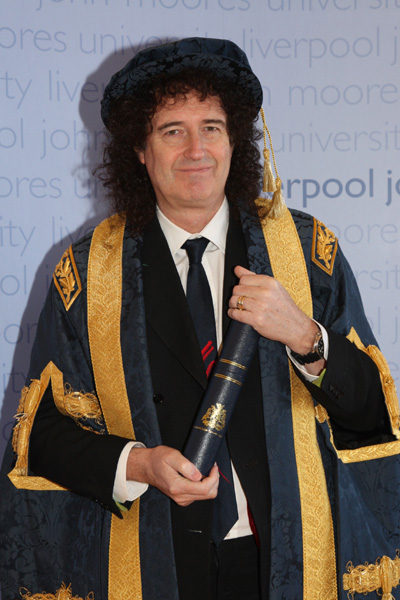
The installation ceremony took place in Liverpool's St George's Hall on 14 April in front of an audience of some 500 staff, students and alumni of the University as well as the Lord Lieutenant of Liverpool, mayors and other dignitaries.
Two former LJMU Chancellors were also in attendance - Cherie Booth QC, who served as Chancellor between 1999 and 2006, and John Moores CBE, her predecessor, who served from 1994 to 1999.
Professor Michael Brown CBE, LJMU's Vice-Chancellor, said:
"The ethos of this University is summed up in three simple words: Dream, Plan, Achieve. No one embodies this more perfectly than our new Chancellor, Dr Brian May. While gaining global recognition as a musician, and supporter of the performing arts, he never lost sight of his dream, his passion for astronomy and science. Thirty years after starting his PhD, he achieved his doctorate, proving himself a true polymath and exemplifying the power of lifelong learning.
"Such dedication and commitment are echoed in the determined efforts of LJMU's staff and students as work towards their goals. There is no doubt that Brian May will be a real champion for LJMU and a tremendous role model for our students. We are delighted to welcome him as our new Chancellor today."
Chancellor Dr Brian May responded, saying:
"I am very proud to be the new Chancellor of Liverpool John Moores University, and I am particularly touched that so many staff and students are able to be here today. I am passionate about education and lifelong learning. It really doesn't matter how old you are or what stage of your life you are in, it is never, ever too late to start learning. I proved that by completing my PhD, 30 years after I started it. As Chancellor, I hope that my personal experiences will act as an inspiration for others."
Brian May's involvement with the University began in 2007 when he was awarded an Honorary Fellow in recognition of his outstanding contribution to the arts, but more significantly for encouraging the public understanding of science following publication of his renowned book Bang! The Complete History of the Universe. Dr May co-authored the book with Chris Lintott and Sir Patrick Moore, who is also a Fellow of LJMU.
Brian studied Astrophysics at Imperial College, London and gained his BSc before progressing to a PhD. He put his academic career on hold to concentrate on his musical ambitions, founding the rock group Queen, which has since enjoyed world-wide success selling 400 million records and touring the world many times. In October 2007, he finally completed his PhD thesis and was awarded his doctorate.
Dr May has already established links with scientists in the University's internationally acclaimed Astrophysics Research Institute, whose world-class research, work with schoolchildren, and development of robotic telescopes earned them a Queen's Anniversary Prize in 2005.
Fittingly, the University-owned Liverpool Telescope - one of the world's largest robotic telescopes, designed and built by LJMU experts - is located in La Palma, Canaries, the location of Dr May's original observations when a PhD student at Imperial.
Professor Mike Bode, Director of LJMU's Astrophysics Research Institute said:
"We are absolutely delighted that Dr May is the University's new Chancellor. We look forward to sharing some observational work with him in the future, and I think he will be amazed at how our capabilities have advanced over the years."
Notes to editors
* Dr Brian May is LJMU's fourth Chancellor since the institution's inauguration as a university in 1992. Henry E Cotton JP served as Chancellor between 1992 and 1993. He was followed by John Moores CBE DL, who held the position from 1994 to 1999. Cherie Booth QC was installed as Chancellor in 1999, serving an extended tenure until 2006.
* As Chancellor, Dr Brian May will perform a variety of duties: the ceremonial, through the conferring of degrees at LJMU's graduation ceremonies; pastoral support, as demonstrated through a genuine interest in the activities of staff and students; scholarly engagement, via an ongoing commitment to educational advancement, and the ambassadorial, representing the University at events both at home and abroad.
* As lead guitarist of Queen, Dr Brian May will continue his active career in music with a European concert tour throughout the autumn and a new Queen album release on September 1 2008.
HERE IS A LIST OF THE SPEAKERS FROM THE TENERIFE ASTROMINCAL MUSICAL CONFERENCE IN 2011
Poyékhali! ("We have lift off!") - 50 Years in Space
The STARMUS FESTIVAL is a unique scientific, artistic and musical event that will take place in the Canary Islands, a touristic and astronomical paradise in Spain. Tribute is to be paid to the cosmonaut Yuri Gagarin at an event in which renowned colleagues and astronauts, such as Alexei Leonov, Valentina Tereshkova, Jim Lovell, Bill Anders and Buzz Aldrin will be taking part
A theoretical physicist at Caltech (USA), Kip Thorne was the Feynman Professor of Theoretical Physics at Caltech until 2009 and is one of the world’s leading experts on the astrophysical implications of Einstein’s general theory of relativity. His first film project, Interstellar, teams him with Steven Spielberg. About 50 physicists have received PhDs at Caltech under Thorne’s personal mentorship. In 1984, he cofounded the LIGO Project to open the gravitational-wave window onto the Universe; LIGO is the largest project ever funded by the NSF. In 1988, Thorne triggered modern research on whether the laws of physics allow backward time travel. In 1973, he co-authored the classic textbook Gravitation with Charles Misner and John Wheeler, from which most of the present generation of scientists have learned general relativity theory.
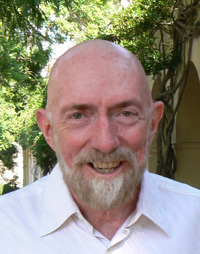

Professor Robert Williams, an astrophysicist at the Space Telescope Science Institute (STScI), is President of the International Astronomical Union. (IAU). He is an STScI Distinguished Research Scholar and Adjunct Professor at Johns Hopkins University’s Physics and Astronomy Department in Baltimore.
Professor Williams served as Hubble STScI Director from 1993 until 1998, before which he had been Director of Cerro Tololo Interamerican Observatory in Chile. He was instigator and leader of the Hubble Deep Field, one of humankind’s deepest, most detailed visible-light views of the Universe. A champion of research and public outreach, Prof. Williams has lectured widely on recent astronomical discoveries and their relation to human understanding. He is an avid runner and cyclist.
INVITATION: http://www.youtube.com/watch?v=pPm8ZJTa3WI
Biologist and Professor of Genetics at Harvard Medical School and Alexander Rich Distinguished Investigator at Massachusetts General Hospital, Boston, Professor Szostak was awarded the 2009 Nobel Prize for Physiology or Medicine, along with Elizabeth Blackburn and Carol W. Greider, for the discovery of how chromosomes are protected by telomeres. Prof. Szostak has made significant contributions to the field of genetics and is credited with the construction of the world’s first yeast artificial chromosome. Szostak lab focuses on the challenges of understanding the origin of life on Earth and the construction of artificial cellular life in the laboratory. He has received Hans Sigrist and Dr A. H. Heineken prizes, a Lasker award, the United States National Academy of Sciences Award in Molecular Biology and the Genetics Society of America Medal.
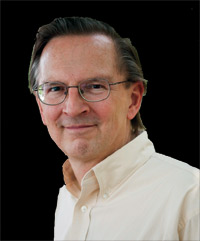
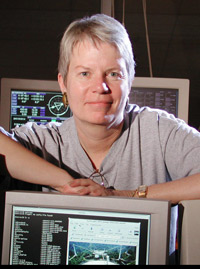
Director of the Center for SETI (Search for Extraterrestrial Intelligence) research at the SETI Institute in California (USA), Tarter holds the Bernard M. Oliver Chair for SETI and is a Fellow of the American Association for the Advancement of Science and the California Academy of Sciences. She was named one of the 100 most influential people in the world by Time Magazine in 2004. She was awarded the Telluride Tech Festival Award of Technology (2001), the Carl Sagan Prize for Science Popularization (2005) and the 2009 TED Prize. Dr Tarter’s astronomical work is illustrated in Carl Sagan’s novel Contact. In the film version of Contact the protagonist, Ellie Arroway, is played by Jodie Foster. Arroway was ‘largely based’ on Tarter’s work. Dr Tarter has spoken around the world and has published dozens of articles about SETI to engage earthlings across the planet in this important search and to encourage young people (especially young women) to pursue careers in science, engineering and technology.
Professor Michel Mayor is an astrophysicist at Geneva University (Switzerland). Together with Didier Queloz, in 1995 he discovered the first extrasolar planet, named 51 Pegasi b, orbiting the sunlike star 51 Pegasi. Professor Mayor was awarded the Swiss Marcel Benoist Prize in recognition of his work and its significance for human life. In 2000 he was awarded the Balzan Prize and in 2004 he received the Albert Einstein Medal. In 2005, he was awarded the Shaw Prize in Astronomy. His team is responsible for finding about half of the exoplanets discovered to date. Michel Mayor is a principal investigator of the HARPS consortium planet search survey, which has discovered a growing population of superearths and Neptune-like small mass planets.
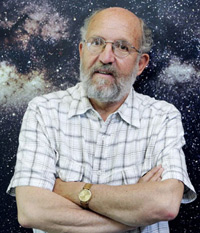

Brian May, CBE, Chancellor of Liverpool John Moores University (UK), has published research articles in the field of the solar Zodiacal dust cloud. He is co-author, with Sir Patrick Moore and Chris Lintott, of Bang! – The Complete History of the Universe. A lifelong devotee of 3-D imaging, together with art conservator Elena Vidal, he recently published A Village Lost and Found, a book bringing the important work of 19th century stereoscopic photographer T. R. Williams into the 21st Century. Dr May is most widely known as lead guitarist and founding member of the legendary rock band Queen. He has written 22 classic rock hits worldwide - among them the anthemic ‘We Will Rock You’, ‘The Show Must Go On’, ‘I Want It All’, ‘Who Wants to Live Forever’ and ‘Save me’. Founder of the action group "SAVE ME" last year, Brian is a passionate campaigner for the welfare of wild animals.
Astrophysicist Sami Solanki is Director of the Max Planck Institute for Solar System Research (Germany) and Professor at ETH Zurich and the Technical University of Brunswick. His group’s research is dedicated to understanding the physics of solar magnetism, activity and variability, as well as the Sun’s influence on the Earth’s climate. Professor Solanki is principal investigator of the Sunrise project, which flew a large solar telescope on a stratospheric balloon, and of the PHI instrumentation on ESA’s Solar Orbiter mission. He is also co-investigator for the Virgo instrument on the ESA/NASA mission SOHO, the Secchi instrument on board NASA’s STEREO mission and HMI on board NASA’s SDO mission.
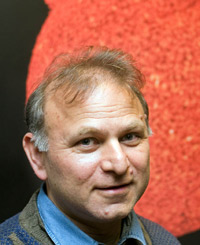
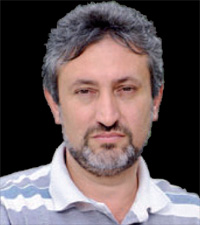
Dr Israelian, an astrophysicist at the Institute of Astrophysics of the Canary Islands (Spain), is the creative director and spiritual father of the STARMUS Festival. In 1999 he led a collaboration reported in the journal Nature that found the first observational evidence that supernova explosions are responsible for the formation of black holes. His research has led to several high profile discoveries published in Nature and other professional journals on topics such as extrasolar planets, massive stars and black hole binary systems. Dr Israelian has spoken at dozens of professional conferences, including TED Global. He was awarded the 2010 Ambartsumian Prize for Astrophysics, Physics or Mathematics, along with Michel Mayor and Nuno Santos, for the studies of extrasolar planets and their parent stars.
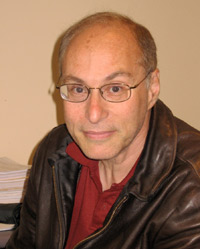
An astrophysicist at the University of Princeton (USA), Professor Burrows is currently the Chair of the National Research Council Board on Physics and Astronomy (BPA), the BPA Liaison to the U.S. Decadal Survey Committee, a member of the AURA board and the Board of Trustees of the Aspen Center for Physics. In the past he served as the Chair of the Advisory Board of the Kavli Institute for Theoretical Physics (KITP), as the co-Chair of the NASA Universe Subcommittee and as the Chair of the Theoretical Astrophysics Program of the University of Arizona. Adam Burrows works on a broad variety of stellar astrophysics problems and puzzles.
Richard Dawkins, ethologist and evolutionary biologist, was the first holder of the Charles Simonyi Chair for the Public Understanding of Science at Oxford University, and a Fellow of New College, Oxford, Retired. His bestselling books include The Selfish Gene, The God Delusion, The Extended Phenotype, The Blind Watchmaker, River Out of Eden, Climbing Mount Improbable, Unweaving the Rainbow, and The Ancestor’s Tale. Dawkins is a Fellow of both the Royal Society and the Royal Society of Literature. He is the recipient of numerous honours and awards, including the 1987 Royal Society of Literature Award, the 1990. Michael Faraday Award of the Royal Society, the 1994 Nakayama Prize, the 1997 International Cosmos Prize for Achievement in Human Science, the Kistler Prize in 2001, the Shakespeare Prize in 2005, the 2006 Lewis Thomas Prize for Writing about Science, and he was named Author of the Year at the 2007 Galaxy British book Awards. His latest book, The Greatest Show on Earth: The Evidence for Evolution, was published in September 2009.

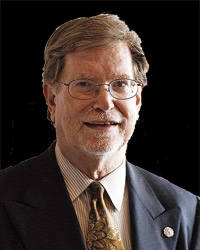
An astrophysicist at the University of California Berkeley (USA), Professor Smoot won the Nobel Prize in Physics in 2006 for his work on COBE with John C. Mather that led to the measurement of the anisotropy and blackbody form of the cosmic microwave background radiation. He is a senior scientist at LBL and, since 2010, a professor of physics at the Paris Diderot University, France. In 2003 he was awarded the Einstein Medal. George Smoot is a collaborator in the design of the Supernova/Accelleration Probe (SNAP), a satellite planned to measure the properties of dark energy. He reached the final question, which he correctly answered, becoming the second person (and first male) to win the one million dollar prize. Professor Smoot has spoken at TED and written (with Keay Davidson) Wrinkles in Time, a popular book about cosmology.
Dr Leslie Sage is a senior editor (physical sciences) at the science journal Nature and is based at the Astronomy Department of the University of Maryland (USA). He is also a long-time columnist for the Journal of the Royal Astronomical Society of Canada. He grew up in the western suburbs of Toronto, Canada, but now lives with his family in Potomac, Maryland. In his spare time, he studies the gas content and star-forming properties of galaxies, and cooks new recipes found by his wife.

Joseph Silk holds the Savilian Chair of Astronomy at the University of Oxford (UK) and is Director of the Beecroft Institute for Particle Astrophysics and Cosmology. Professor Silk has over 500 publications, of which 20 have been published in Nature and 11 in Science. A graduate of Harvard University, Professor Silk has given more than two hundred invited conference lectures, primarily on dark matter, galaxy formation and cosmology. He is a Fellow of New College, Oxford.

Sergei Zhukov is Executive Director of the Space Technologies & Telecommunications Cluster of the Skolkovo Foundation and a Member of Russian Academy of Cosmonautics. From Dzhezkazgan, in Kazakhstan (now the landing site for Soyuz landing modules), Zhukov graduated from Bauman Moscow State Technical University and did post-graduate work on gas core nuclear installations for space applications. Since 1990, he has been President of the Moscow Space Club, a non-profit NGO aiming to support national and international space activities. He was instrumental in founding the Russian Space Agency (established in 1992) and has been an active member of Russian Cosmonaut Court since 2003. He has graduated in courses at the Gagarin Space Training Centre and is qualified as a test cosmonaut. He has published two collections of poems and authored several scientific articles.
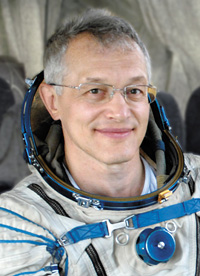
Rich Goldman is the Vice-president of Corporate Marketing and Strategic Alliances for Synopsys (Mountain View, California), a CEO of Synopsys Armenia and a finalist for the 2010 US Secretary of State ACE Award. He is the Chairman of the Board of the Synopsys Outreach Foundation and of the Synopsys Charitable Foundation for Armenia. Goldman is a Guest Professor at the Chinese Academy of Science and a Commissioner of the Advanced SOC Design Joint Lab Academic Committee there. He is an honorary Professor at Moscow Institute of Electronic Technologies and currently serves on the Board of Directors of the Silicon Valley Technical Institute and the board of editors of Economics magazine.

FROM: http://starmus.com/pages/en/conferences.php
A tribute to Yuri Gagarin and his historical flight on Vostok 1 on 12 April, 1961. Close friends and renowned astronauts will share their memories of Yuri Gagarin, Vostok, Apollo and other key missions. Documents from Soviet archives will be shown and accompanied by a documentary about Gagarin. This unique conference, accompanied by musical performances, will take us to an amazing journay in time, highlighting the most dramatic and important moments in space exploration during the last 50 years.
On 18 March, 1965, Alexey Leonov became the first human to conduct a space walk. This historic event occurred on the Voskhod 2 flight. He was outside the spacecraft for 12 minutes and nine seconds on 18 March, 1965, connected to the craft by a 5.35 metre tether. At the end of the spacewalk, Leonov’s spacesuit had inflated in the vacuum of space to the point where he could not re-enter the airlock. He opened a valve to allow some of the suit’s pressure to bleed off and was barely able to get back inside the capsule. From 1976 to 1982, Leonov was the commander of the cosmonaut team (“Chief Cosmonaut”) and deputy director of the Yuri Gagarin Cosmonaut Training Center. Leonov is an accomplished artist whose published books include albums of his artistic works. Arthur C. Clarke’s book 2010: Odyssey Two was dedicated Leonov and Andrei Sakharov; the fictional spaceship Cosmonaut Alexei Leonov was named after him.

SPEECH http://www.youtube.com/watch?v=dnlzEv-wrJk&feature=related
IN RUSSIAN http://www.youtube.com/watch?v=TvHlTjq2VMA&feature=related
STARMUS FESTIVAL ON CANARIAS 2011 Alexei Leonov , Buzz Aldrin and Jill Tarter
http://www.youtube.com/watch?v=dnlzEv-wrJk
Victor Gorbatko was a pilot in the Soviet Air Force. In 1960, together with Gagarin and Leonov, he was selected as a cosmonaut and began his cosmonaut basic training. He flew as a research engineer on Soyuz 7 (1969) and as commander the missions Soyuz 24 (1977) and Soyuz 37/Soyuz 36 (1980). He also served as backup crew for Voskhod 2 and Soyuz 5, 21, 23 and 31. He acted as Deputy Sports Minister and later lectured at the Air Force Engineering Academy. Since 1993 he has been General Director of AA&AL, Moscow.
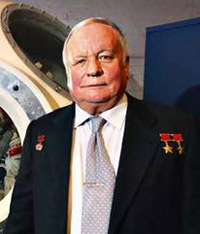
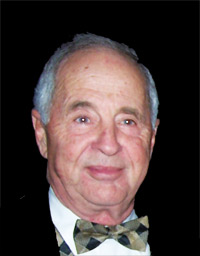
After obtaining his Bachelor of Science degree in 1955 from the United States Naval Academy, William ("Bill") Alison Anders entered the United States Air Force as a fighter pilot. He earned his Master of Science degree in Nuclear Engineering in 1962 from the Air Force Institute of Technology. In 1964 he was selected by NASA to join the third group of astronauts. He was backup pilot for Gemini XI and Apollo 11 missions. In 1968 he Lunar Module pilot for Apollo 8, the first manned mission to leave Earth orbit. It was Anders who took the “Earthrise” photograph of Earth seen rising above the surface of the Moon from lunar orbit — one of the most iconic images of the twentieth century. After leaving NASA, Anders turned to a career in high-level management of nuclear energy. His life and career are recounted in the book In the Shadow of the Moon (2007).

After serving as a Naval Aviator, he served 17 years with the NACA and NASA as an engineer, test pilot, astronaut and administrator. As a research pilot at NASA's Flight Research Center at Edwards, California, he was a project pilot on many pioneering high speed aircraft, including most of the early supersonic jets, the rocket powered X-1, the vertical take off and landing X-14, and the well known X-15, which he flew to over 60 kilometers altitude and 6400 kilometers per hour. He transferred to astronaut status in 1962. He was the commander of the Gemini 8 flight in 1966 when he performed the first successful docking of two vehicles in space. As spacecraft commander for Apollo 11, he, with colleagues Mike Collins and Buzz Aldrin, completed the first landing mission to the moon. He received his engineering degrees from Purdue University and the University of Southern California. During the years 1971-1979, he was Professor of Aerospace Engineering at the University of Cincinnati. He is a member of the U. S. National Academy of Engineering and the Royal Academy of the Kingdom of Morocco. In 2002, Mr. Armstrong retired as Chairman of the EDO Corporation, an electronics and aerospace manufacturer.
SPEECH: http://www.youtube.com/watch?v=TUDsMKQ4hek&feature=related
http://www.youtube.com/watch?v=TUDsMKQ4hek
NEIL ARMSTRONG STEPS ONTO MOON
http://www.youtube.com/watch?v=wdSPF7ujsdw&feature=related
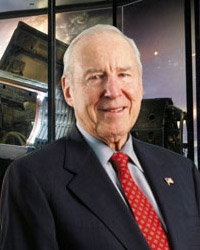
Captain James A. Lovell, Jr, joined the space programme in 1962 following extensive experience as a Naval Aviator and Test Pilot. He was backup pilot for Gemini 4 and backup commander for Gemini 9. He was the pilot on Gemini 7, the first rendezvous of two manned spacecraft in 1965, and commander of the Gemini 12 mission in 1966. Lovell became command Module Pilot and Navigator for Apollo 8 - man's maiden voyage to the moon - and backup commander to Neil Armstrong for the Apollo 11 lunar landing mission. Lovell's fourth and final flight was on Apollo 13 in 1970. Captain Lovell's education prepared him for the change from explorer to businessman. Since leaving NASA, he has led a successful high-executive career. He has received honorary doctorates from many universities, together with an impressive share of honours and awards. In 1994, he and Jeff Kluger wrote Lost Moon, the story of the courageous mission of Apollo 13. In 1995, the film version of the bestseller Apollo 13 was released to rave reviews.
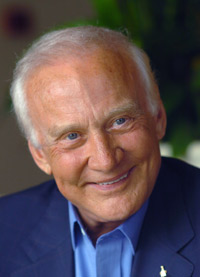
Buzz Aldrin graduated with first class honours in Mechanical Engineering at West Point in 1951 and joined the United States Air Force as a fighter pilot. In 1963, he obtained his ScD in Astronautics, the subject of his thesis being the rendezvous of spacecraft in orbit. In that same year, he joined NASA as an astronaut. Aldrin was the Lunar Module pilot on Apollo 11, the first manned lunar landing mission in history. On 20 July, 1969, he and mission commander Neil Armstrong were the first men to set foot on the Moon. Known among his astronaut colleagues as “Dr Rendezvous”, in 1985 Aldrin devised a special type of Earth-Mars spacecraft trajectory now known as the Aldrin Cycler. Aldrin has written two autobiographies: Return To Earth (1973) and Magnificent Desolation (2009). He is an energetic campaigner for space tourism as a means of engaging the public in space exploration. In 1993 he produced a computer strategy game called Buzz Aldrin’s Race Into Space. To commemorate the 40th anniversary of the first lunar landing, Buzz teamed up with Snoop Dogg, Quincy Jones, Talib Kweli, and Soulja Boy to create the rap single and video Rocket Experience.
Charles ("Charlie") Moss Duke, Jr, graduated in Naval Sciences at the United States Naval Academy in 1957 and obtained a master’s degree in Aeronautics from the Massachusetts Institute of Technology in 1964. Duke entered the US Air Force in 1957 and served as a fighter interceptor pilot in Germany. He is now a retired Brigadier General of the US Air Force. In April 1966, he was selected to join NASA’s fifth group of astronauts. Duke served as "capcom" at Mission Control in Houston for the Apollo 11 mission and was backup Lunar Module pilot for Apollos 13 and 17. As Lunar Module pilot for Apollo 16 in 1972, Charlie Duke became the tenth – and youngest – man so far to walk on the Moon.

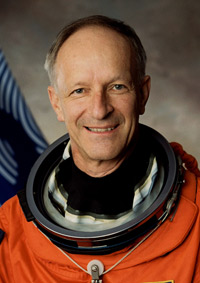
Claude Nicollier studied Physics at the University of Lausanne and received a Bachelor of Science degree in 1970. He then worked as a graduate scientist from 1970 to 1973 at the Institute of Astronomy at the University and at the Geneva Observatory before obtaining a Master of Science degree in Astrophysics from the University of Geneva in 1975. Nicollier has spent over 1000 hours in space, including one space walk lasting 8 hours and 10 minutes. He served as mission specialist on four missions with four different space shuttles: Atlantis, Columbia, Discovery and Endeavour. He has received many honours and medals, including the IAF Yuri Gagarin Gold Medal. Nicollier installed the famous Wide Field and Planetary Camera 2 (WFPC2) on the Hubble Space Telescope. This camera was used to image the Hubble Deep Field in 1995, the Hourglass Nebula and the Egg Nebula in 1996, the Hubble Deep Field South in 1998 and many other important objects.

In 1973 Yuri Mikhailovich Baturin he graduated at the Moscow Institute of Physics and Technology. In 1980 he also graduated at the Law Institute of Moscow State University, where he also obtained a doctorate in laws. A former politician, he has been Head of National Security and has served on the National Defence Council. In 1997 he was selected as a cosmonaut. In 1998 he flew on Soyuz TM-28/Soyuz TM-27 as a research cosmonaut and in 2001 on Soyuz TM-32/Soyuz TM-31 as flight engineer.
ALEX CHERNEY
http://www.youtube.com/watch?v=HXbEk1E2bHQ
OCEAN SKY: http://www.youtube.com/watch?v=wd5lkKxbHHY&feature=related
Charles Telesco on CanariCam at STARMUS
http://www.youtube.com/watch?v=RRIdzPagC4Y
FROM: http://starmus.com/pages/en/tribute.php
Tangerine Dream, this seven time Grammy nominated European band, is a singular phenomenon. They are using just high-end modern technology for their unusual instrumental compositions and live performances. Many have tried to copy

Even to describe what their music is all about can be a hard job - TD will hardly fit into any given musical pigeonhole. Recognizing the here today, gone tomorrow adage of the entertainment industry, TD has robustly survived all the stormy and cloudy days within the international showbiz.

Apart from their outstanding live performances around the globe and their high profile studio work, the Hollywood business has played a major role within TD‘s international career. For many years TD did lots of haunting scores for Hollywood movie productions. At a time when electronic instruments were widely misunderstood, Tangerine Dream became recognized as the pioneers of a new instrumental music in the USA. They introduced new sounds, sound effects and so far unknown production techniques.

Great painters, photographers, actors, writers and dancers have honoured Tangerine Dream for the inspiration for their own work they got from listening to the music of TD. Tangerine Dream’s reputation in the world of music, their vast experience and professionalism has reserved them already a place within the gallery of remarkable artists out of the last four decades.
TENERIFE 2011
http://www.youtube.com/watch?v=zZjXslTuFds
BRIAN MAY INTRODUCES THE STARMUS FESTIVAL
http://www.youtube.com/watch?v=HpHkPamY3mU
BTIAN MAY WHAT ARE WE DOING IN SPACE?
http://www.youtube.com/watch?v=BQZBWqhHtRY
THIS BLOG CONTINUES ON PAGE 101
BLOG TWO
INDEX
BLOG ONE INDEX
http://www.greatdreams.com
http://www.earthmountainview.com